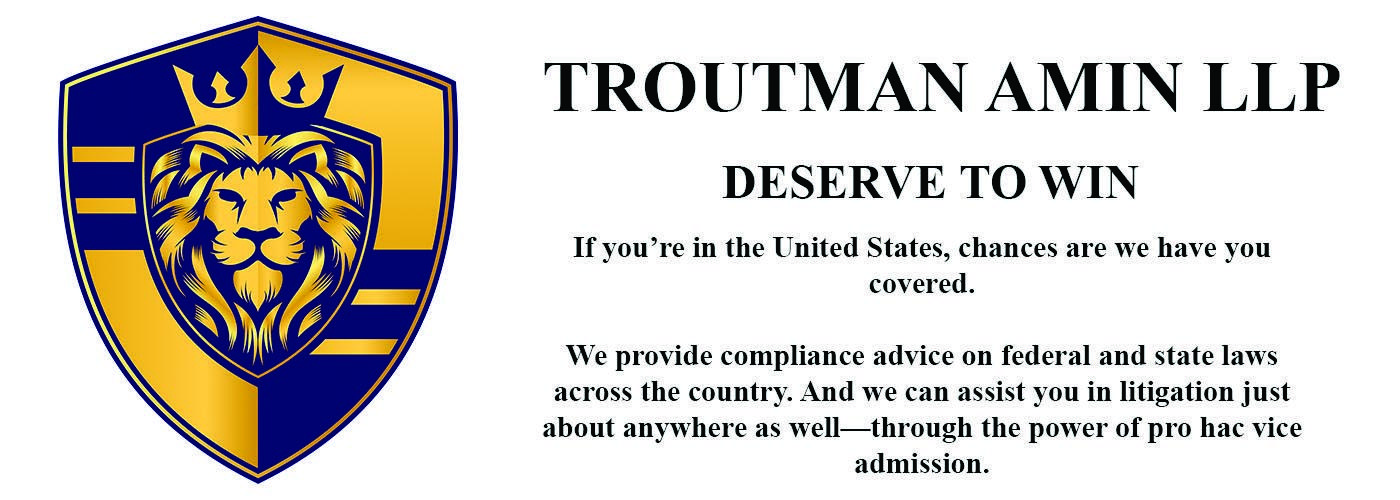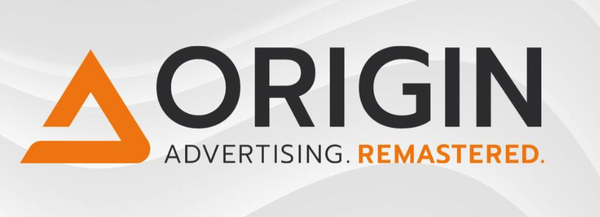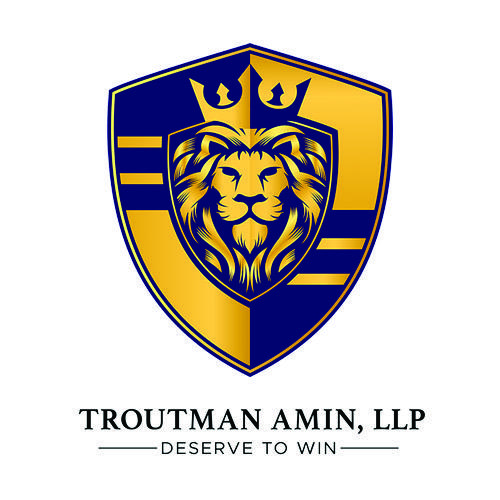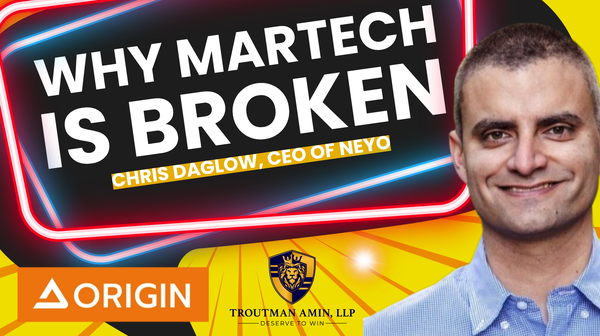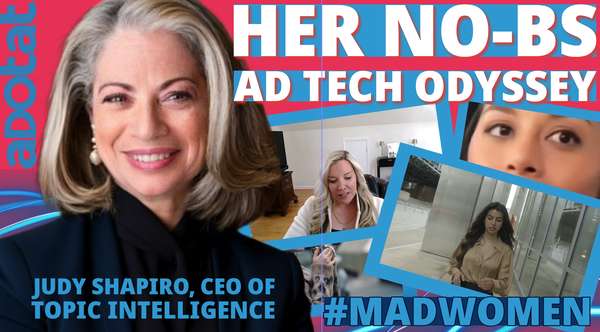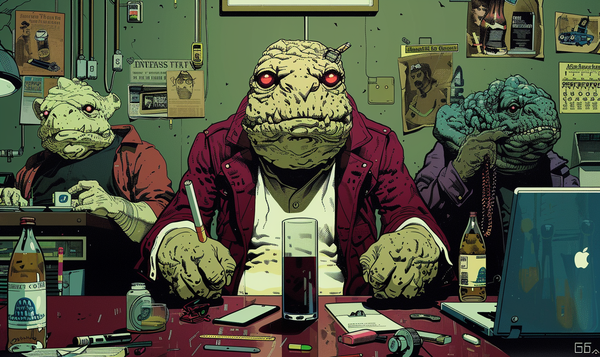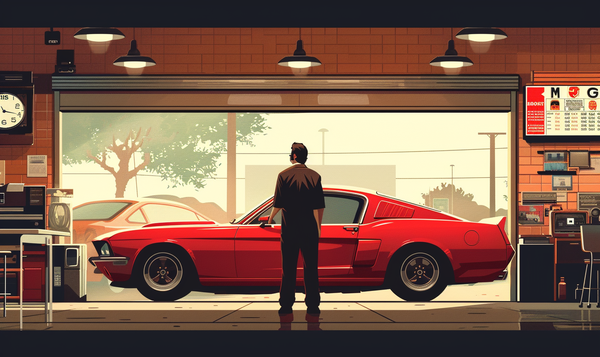Jonah Goodhart has been playing the ad tech game for longer than some of us have been alive—no kidding. He’s spent the past quarter-century turning what most people call “data” into a treasure map for digital advertisers, all while pioneering new ways to measure attention. From co-founding Moat, which he famously sold to Oracle, to his latest brainchild, Montauk Labs, Jonah’s not just in the business of following the
money—he’s figuring out how to quantify it, slice it, and serve it up like sushi at an all-you-can-eat buffet.
Let’s set the scene. Jonah’s on the line from his summer hideout somewhere between Cape Cod and Montauk, balancing four kids under 14, multiple business ventures, and probably a few sleepless nights. “We usually try to escape the city during the summer,” Jonah says. “My wife plans a mix of camps and activities, and we hop between spots like Cape Cod and
Montauk. It's a bit chaotic, but it works.” Montauk, it turns out, is more than just a summer retreat. It’s also the namesake of Montauk Labs, a nod to his favorite seaside escape where ideas flow as freely as the waves.
But before Montauk Labs and Mobian—the latest venture named after his dad’s book, “Mobian Nights”—there was Moat, Right Media, and a long list of other ventures that shaped Jonah into the ad tech veteran he is today. His origin story reads like a
classic startup tale, if the startup world were a chaotic mix of kids barely out of college and e-commerce companies throwing free stuff at customers like it was going out of style. “Back in the late 90s,” Jonah recalls, “my brother and I started our first company by putting up a website to collect email addresses from people who wanted good deals. This was when e-commerce companies were practically giving away their products to acquire new customers.”
You know
that moment when everything just clicks—or maybe, in this case, clicks and converts? That happened when Barnes & Noble, one of the giants dipping its toes into the online space, called him up. “Are you the person telling everyone how to get free stuff from our site?” they asked. Jonah hesitated for a beat—was this going to be a cease and desist or something more lucrative? “Yes… maybe. How can I help you?” Their response: “Great! Add this code to your link, and we’ll pay you for every
person who comes to our site.” That was it—a business was born, not with a mission statement or a grand vision, but with a phone call and an affiliate link.
The journey from broke college kid to the co-founder of Moat wasn’t some smooth, upward trajectory—it was more like a drunken stumble through the wild west of the early internet. Picture this: it’s the late ’90s, and Jonah Goodhart and his brother are two young guys who decide to turn a side hustle—finding free
stuff online—into a business. They start with a simple idea: build a website, collect email addresses, and tell people where to get all the free junk e-commerce companies were giving away like candy at a parade. This was back when companies like Pets.com were spending money like they’d invented it, and the Goodhart brothers were there, shoveling in the gold. But here’s the kicker—they actually thought it would last.
“We had an offer to sell our first company, and
we didn’t,” Jonah recalls, with the kind of look you give when you remember the time you bought Blockbuster stock in 2005. “We thought we were doing great, but then the market shifted, and the business didn’t survive.” Spoiler alert: it turns out you can't build a sustainable business model on giving away free dog food. Who knew? But Jonah looks back at that near-miss with a mix of regret and gratitude. If they’d cashed out early, they might have made a quick buck, but they also would have
missed out on what came next—one of the biggest pivots of his career: teaming up with Mike Walrath to build Right Media.
Right Media, for the uninitiated, was a digital ad exchange back when most people thought ‘digital’ was just a cool word for "websites." Walrath, who’d gone from selling gym memberships to selling banner ads at DoubleClick, saw something in the scrappy Goodhart brothers. “Mike was one of my mentors,” Jonah says. “He taught me to always look where
the puck is going, not where it is now.” And, let’s be honest, in an industry that often felt like playing chess with pigeons—people just making a mess and strutting around like they’d won—having someone with vision was a game-changer. Under Walrath's leadership, Right Media didn’t just survive; it thrived and eventually got gobbled up by Yahoo! for a cool $850 million.
But it wasn’t all champagne and high-fives. Walrath had his own unique way of mentoring—like
that time he casually told Jonah to go out and do 800 meetings. “I don’t know why he picked 800,” Jonah laughs, “but I actually went out and did it.” That’s right—two years of back-to-back meetings, coffee chats, conference room marathons, and probably a few awkward elevator pitches. “It opened my eyes to the real problems people were trying to solve,” he says. “By the time I came back, I had a crystal-clear picture of what we needed to build.” Walrath might’ve been half-joking, but Jonah took
it dead seriously. And, honestly, that’s kind of Jonah in a nutshell—he’s the guy who hears “do 800 meetings” and actually shows up for every single one. Because while some people talk about getting their hands dirty, Jonah rolls up his sleeves and dives right into the mud.
And here's the kicker—it worked. Those 800 meetings weren’t just a brutal exercise in networking; they were the crucible that shaped Jonah’s approach to business ever since. By listening to
everyone—from the bigwigs to the small fries—he learned what people really needed and how to build products that actually solved those problems. It’s not exactly glamorous, but it’s the kind of gritty, unsexy work that separates the flash-in-the-pan startups from the ones that actually make it. And for Jonah, that’s always been the name of the game—knowing where the puck is going, long before anyone else even knew there was a game on.
Today, Jonah is back at it
again, as if he ever left, this time with Mobian—a venture that's all about measuring things that most of us didn’t even know needed measuring. But Jonah, true to form, is not content with counting clicks or tracking eyeballs; no, he’s going after the holy grail of digital advertising: understanding how people actually feel. “We’re building again in the measurement space,” he says, with the kind of enthusiasm you’d expect from someone who thinks metrics are fun at parties. “We’re excited
to use modern technology like AI and large language models.” In other words, he’s looking to go beyond the primitive metrics of old, the digital equivalent of reading chicken bones, and dive straight into the messy, complex, utterly human realm of emotions and context.
This is not your grandfather’s ad tech. Forget those days of keyword scanning and basic algorithmic guesswork—those are as relevant today as MySpace or a dial-up modem. Jonah wants to know not just
what people are looking at, but how they’re feeling when they see it. “The old methods? They’re like trying to catch smoke with your hands,” he scoffs. And he’s got a point. Those old-school approaches, built on keyword lists and surface-level analytics, were fine for the early 2000s, but in today’s hyperconnected world, they’re about as useful as a flip phone at a 5G convention.
“Take brand safety,” Jonah continues, not missing a beat. The old-school
approach was to flag content by scanning for certain ‘offensive’ words—like a digital version of the FCC but with even less context. “But AI allows us to go deeper,” Jonah explains. “We can differentiate between the word ‘death’ in an article about the New York Knicks versus a tragic event.” In other words, Mobian isn’t just looking at the words on a page; it’s digging into the nuances, the intent, the credibility of the source, and even the emotion behind it. Because in Jonah’s world, context
is king—and the king’s got a hell of a lot more going on than a list of flagged words.
Jonah's vision with Mobian is to turn measurement into something more akin to detective work than data science. Forget just finding out if someone clicked on an ad; he wants to know if they laughed, if they cried, or if they felt so moved they tossed their phone across the room. “We're using AI to understand the context in ways that simply weren’t possible before,” Jonah says.
He’s talking about deploying large language models to parse through the subtleties of human emotion, mood, and context. It's like giving a digital bloodhound the scent of an emotion and sending it out to track every trace of it across the digital landscape.
And here’s where it gets really interesting. Mobian is not just about understanding content—it’s about understanding everything around that content. Think about it: the same piece of content can mean
wildly different things depending on where it’s seen, who sees it, and when. A somber news article on a trusted news site is one thing; that same article on a sketchy blog can feel like a conspiracy theory. Jonah's on a mission to not only measure these differences but to leverage them in real-time. He’s creating tools that can, for example, assess if an ad needs to be yanked because it’s flopping emotionally or if a certain piece of content is creating the wrong vibe for the audience.
“We’re talking about real-time emotion detection,” Jonah says, with the fervor of a guy who’s just figured out how to hack the Matrix. “Imagine being able to instantly pull a creative that’s triggering a negative emotion in the wrong context, or even strategically using negative emotions where they work—like anxiety in an insurance ad.” Because let’s face it: sometimes you need to freak people out a bit to get them to act. Jonah’s all about using emotion strategically,
like a painter with a palette full of digital feelings.
What’s next for Jonah and Mobian? He’s just getting warmed up. He wants to use AI to create a world where ads are not just tolerated but actually welcomed—a world where they speak to us in ways that are relevant, engaging, and yes, even emotional. “We’re building a better mousetrap,” he says, “but one that also tells you how the mouse feels about getting trapped.” And with that, he’s back in the lab,
figuring out the next frontier in a field where he’s already been to the edge and back.
And what about the broader landscape of ad tech? Jonah doesn’t mince words. “Are ad tech companies really being created to solve problems? Absolutely,” he says. “Look, digital ad spend went from a billion dollars to $700 billion because it works. Advertising is storytelling, and we’re just figuring out better ways to tell those stories.” But he also acknowledges the industry’s
imperfections. “Sure, not every company is critical to the future of digital. But I’ve worked in other industries—like healthcare—and trust me, advertising’s got its act together better than most.”
On whether he’ll ever retire, Jonah laughs. “I don’t see it happening,” he says. “Life is a journey. I want to stay intellectually curious, help people, and leave a positive mark. The idea of just sitting on a beach or playing golf… It’s not for me. I need to be
stimulated, to keep pushing forward.”
For Jonah, it’s all about finding that balance—between work and life, between old methods and new technologies, between being in the trenches and seeing the bigger picture. “If I could go back and give my younger self one piece of advice?” he muses. “Build good habits, reduce stress, and surround yourself with people you care about. At the end of the day, it’s about optimizing for happiness.”
And
with Mobian poised to shake things up, it seems like Jonah Goodhart is doing exactly that.
WATCH THIS EPISODE

